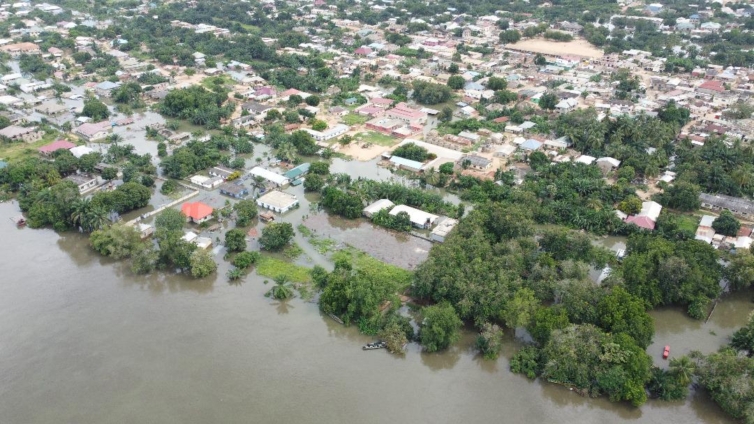Hundreds displaced in Dawhenya over spillage of irrigation dam

|
Getting your Trinity Audio player ready...
|
Hundreds of residents of Dawhenya near Prampram in the Greater Accra Region have been displaced following the flooding of their homes caused by the spillage of an irrigation dam in the area.
Some affected residents who spoke to Citi FM said the water is at the window level of their houses.
“The flooding started around 4 am today. It’s never gone down since then. It has affected several houses in my area. The water entered my house. I’ve not been able to go to work today because I had to pack out. If you see the water level, it keeps going up. When I enter my room, the water is at my knee level,” a resident who gave his name as Emmanuel Aryee said.
Although he noted that the irrigation project sometimes exceeds its banks, he insisted that today’s spillage “is very serious.”
Richard Mohammed, the assembly member for one of the affected areas, said over 200 houses have been affected.
“In my electoral area, over 200 houses have been affected. The water is up to the window level. This is not the first. This year alone, this is the third time,” he said.
Meanwhile, the Scheme Manager for the Dawhenya Dam project, Samuel Tetteh, said they are not to blame for the flooding.
He said the dam is structured in a way that it spills excess water by itself adding that recent heavy rains exacerbated the situation.
“The dam is built in such a way that when the water rises, it spills on its own which has been happening over the years. But this morning, what happened is from another stream that flows every two to three years. This stream comes from the Shai Hills area, adding to the dam’s stream and causing the flood, not from the main dam. Yes, the dam is still spilling. Normally depending on the rainfall at the upstream in the Dodowa areas it can flood for about two to three days. We are not responsible for the dam”.
This comes on the back of the spillage of the Akosombo Dam, which displaced over 30,000 persons who live along the Volta basin.
Source: Citinewsroom




